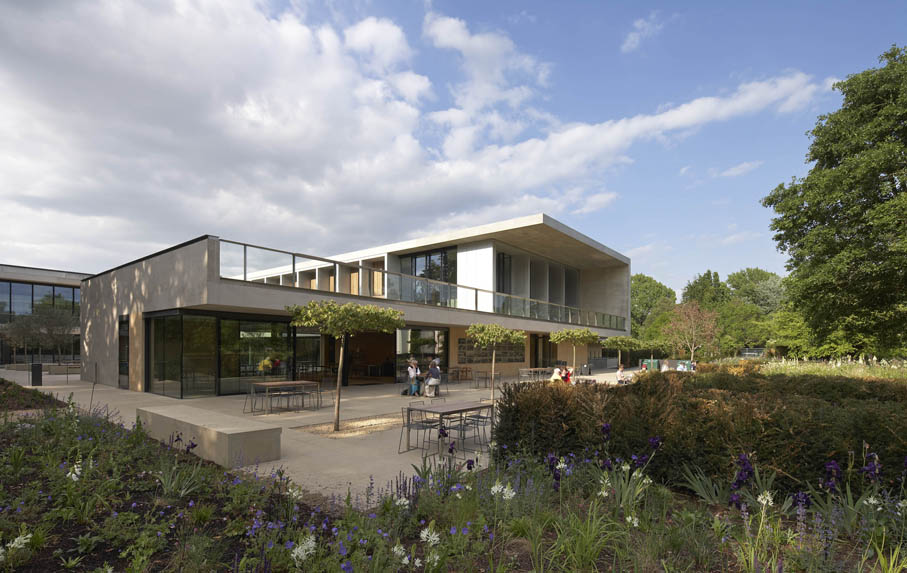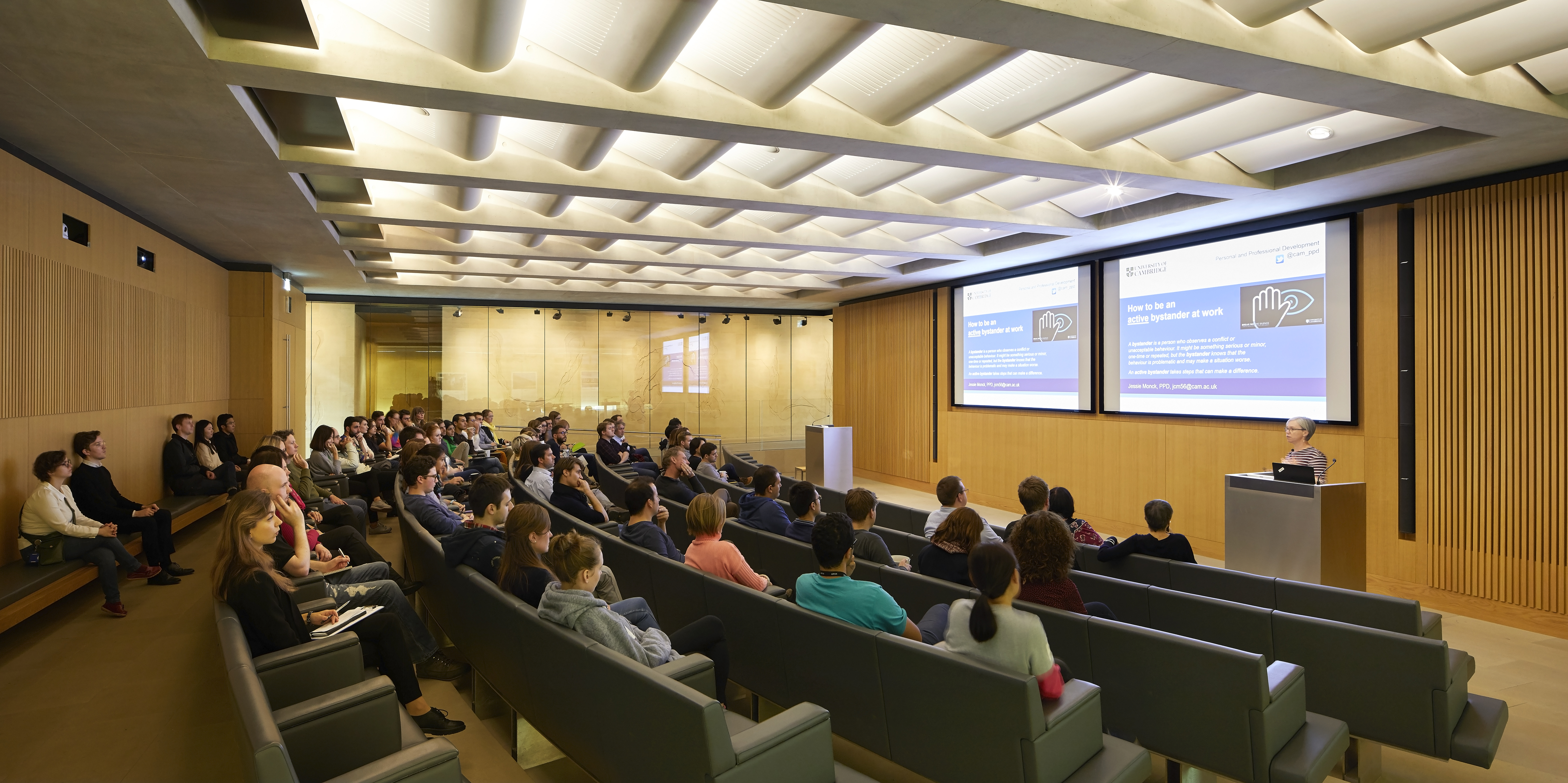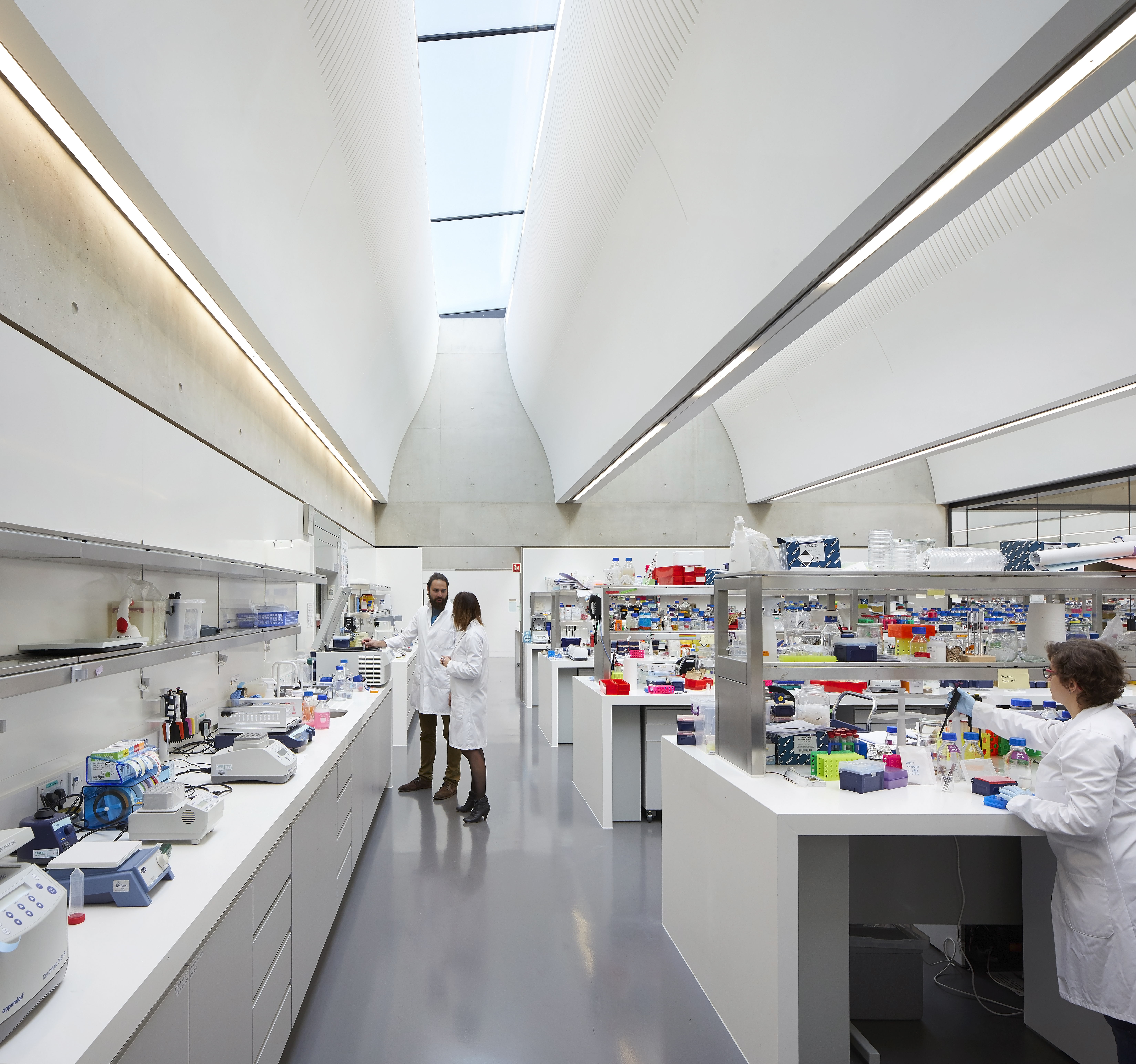Sainsbury Laboratory Cambridge University (SLCU) opened in 2011 as a plant science research centre set within the Cambridge University Botanic Garden. The Garden's remarkable history in plant science and the evolving nature of scientific research inspired the building's award-winning design by Stanton William Architects.
The Cambridge University Botanic Garden was conceived in 1831 by Charles Darwin’s guide and mentor, Professor Henslow, as a working research tool in which the diversity of plant species would be systematically ordered and catalogued. Completed in December 2010, the Sainsbury Laboratory develops Henslow’s agenda in seeking to advance understanding of how this diversity comes about. Its design was therefore shaped by the intention that the Laboratory’s architecture would express its integral relationship with the Garden beyond. As a result, past, present, and future are connected.
The Sainsbury Laboratory is set within the Cambridge University Botanic Garden and also houses the Garden's public cafe and Cambridge University Herbarium. © Hufton + Crow
Designed for collaborations and flexibility
The award-winning 11,000 sq.m. building brings together world-leading scientists in a collaborative working environment that is designed to foster collaboration. The design reconciles complex scientific requirements with the need for a work of architecture that also responds to its landscape setting and provides a collegial, stimulating environment for innovative research and collaboration. The building comprises laboratories, support areas, and meeting spaces, together with the Cambridge University Herbarium, public café and an auditorium where academic symposia and public talks are held.
The 150-seat SLCU auditorium where academic symposia and public talks are held. © Hufton + Crow
Architecture awards
SLCU was opened in 2011 by HM the Queen. Designed by Stanton Williams, the Sainsbury Laboratory was awarded the RIBA Stirling Prize for architecture in 2012. The Stirling Prize is the UK's most prestigious architecture prize and is awarded to the project built or designed in Britain "which has made the greatest contribution to the evolution of architecture in the past year."
The building was described as a "timeless piece of architecture" and an "exceptional building." Judges highlighted the Laboratory's blending of private and public space, the flexibility of design that allows for evolving and changing scientific needs and its integration within the sensitive site of the University Botanic Garden.
Lord David Sainsbury, founder of the Gatsby Charitable Foundation, said: “I am delighted that Stanton Williams has won the RIBA Stirling Prize for the Sainsbury Laboratory, in competition with some outstanding buildings. I am also very proud to be associated with their inspiring building which sets a new standard for laboratory design and blends in beautifully with the historic Botanic Gardens.”
The labs are arranged on one floor in an L-shape, encouraging interaction between scientists. © Hufton + Crow
Other Awards
- RIBA East Building of the Year Award (2012)
- Highly commended in the Design and Innovation Category of the 2012 RICS Awards
- The World’s Best Learning Building 2011 at the World Architecture Festival in Barcelona (2012)
- Civic Trust Award (2012)
- LABC Building Excellence Award for Best Educational Building - East Anglia (2012)
- Keir Construction was awarded a bronze Considerate Contractors Award and Construction Manager of the Year 2011 awards for their work on the Sainsbury Laboratory.
- Arup won the daylight category of the Lighting Design Awards 2012 for their work on the Sainsbury Laboratory.
- Highly commended in the Major Project category of the British Construction Industry Awards. It has been awarded a BREEAM “excellent” rating for its environmental performance.
- Stanton Williams won both the Education Architect of the Year and the overall Architect of the Year Gold Award in the BD Architect of the Year Awards 2011 for work on various buildings including the Sainsbury Laboratory.
- Overall winner and category winner in the British Concrete Society Awards 2011.
Photos by Hufton+Crow



